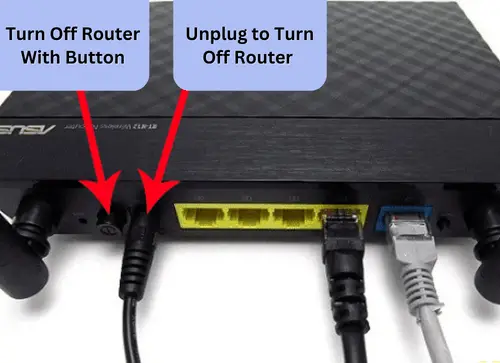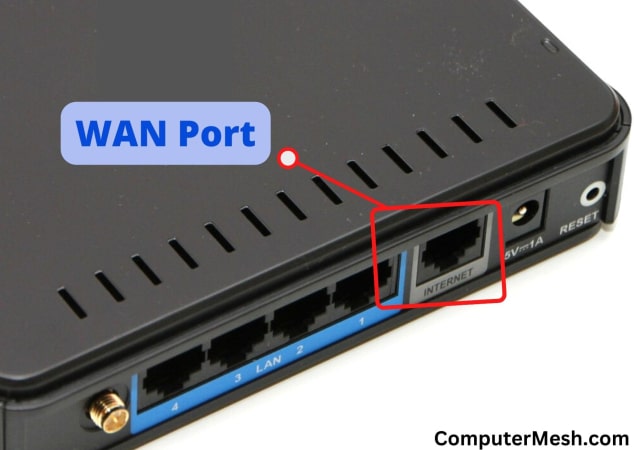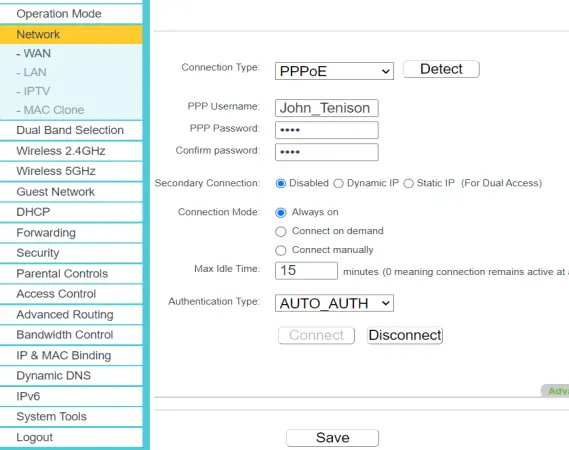Lights on the Router are on, but the Internet not Working?
The indicators on the router should be lit to access the internet on computers and phones. Sometimes Wi-Fi users face a situation where all the lights on the router are on, but there is no Internet is working or constantly disappears.
As I explained meaning of ethernet lights in previous post. This time we understand the main reasons and ways to solve them that work for any router model, be it TP-Link, Asus, Linksys, or others.
Lights on the Router are on, but the Internet does not work, What to do?
First, before thoroughly understanding the problem, I recommend rebooting the router. This can be done either through the website’s control interface or the mobile app.
Or even easier – unplug the router from the power outlet and plug it back in. Or turn off the router with a separate button on the case if there is one on your model.

Many errors get solved, and clear any temporary glitches in this uncomplicated way. Since errors may occur periodically during the continuous operation of the router, it is recommended to reboot it from time to time.
Many devices even have an automatic restart function that boots in at night when no one uses the internet and WiFi isn’t in use.
Reasons & Fixes – When there is no Internet, Even Router light lit up
1. Cable Connection
If there is still no Internet and the lights are on after the reboot, let’s go into more detail. The WAN light indicator is responsible for networking. It should be on when you have an active connection to the Internet. If it’s not lit, double-check if the cable from your provider is plugged into the “WAN” or “Internet” port.

You might confuse it with the “LAN” port, which only connects to a computer, laptop, printer, TV, etc. You can read more about the difference between WAN and LAN in our separate article.
Sometimes a loose cable can disrupt the connection even if the lights indicate otherwise. It also applies to the Ethernet cable that connects your Router.
2. Engineering Works
If the wire is connected correctly and even the router light is on, you still do not have internet access. We can assume that technical work for maintenance, upgrades, or repairs in your area is causing temporary disruptions.
This is especially true if the Internet goes out for a few hours and then returns. This happens occasionally – you need to call your communication service provider and clarify this point.
3. Internet Plan Status
But before that, I would suggest checking your Internet service subscription is up to date and that your plan hasn’t expired or exhausted your monthly data limit.
Very often, users forget that the Internet is a paid service, and once a month, twice a year, or whatever plans you have, you need to replenish your Internet plan.
If your plan is active, there might be an issue on the provider’s end. Contact them to verify the status of your account.
4. Connection Settings
Alright, so your cables are snug, there are no major engineering works, and your internet plan is up to date. The next thing to check is your router’s connection settings. If you cannot connect to the Internet, your Internet connection settings may have been lost.
To fix them, follow these steps:
1. Go to your router’s control panel through a browser at the web address indicated on the label at the bottom of the router such as 198.162.0.1
2. Find the menu and look for the section related to Internet settings. The name may vary depending on the router model.
3. Here, you need to select the type of connection, such as DHCP, PPPoE, Static IP, or 4G (via USB modem).

Below is an example of how it looks:
Enter the necessary authorization data like login, password, and server if required. You can find these details in your service agreement. You can also call the provider’s hotline and find out directly.
After entering all the parameters, save the settings and give your Internet connection another try.
Forced restriction of Internet access
1. Manual assignment of IP addresses
If you connect to the Internet in an office or other public space, then you cannot use the additional settings on the router that restrict access to the Internet for users.
One filtering method is through a manual assignment of IP addresses for computers. In normal mode, the router distributes IP to all connecting devices through the DHCP server. But it could be disabled in the settings allowing only network administrators to register IP addresses for each client manually.
If you can access the router, you can manually register an IP address for your computer, laptop, or smartphone.
Alternatively, you can enable the DHCP server for automatic assignment. If you don’t have the default password for the router, it’s best to reach out to the system administrator to add you as a user.
2. Guest network and client filters
Also, routers offer various levels of access control to prevent everyone from accessing the Internet. For example, a guest network with no Internet access or only certain users allowed access to the network.
Also, in some models, it is possible to give access to the worldwide network only for manually registered devices. And for all new connected to WiFi to limit the Internet.
“Parental Control” or MAC address filtering is commonly used for this. It can be configured in such a way that only devices that are on a pre-compiled “whitelist” are allowed access to the Internet.
While these features are great for security, they can sometimes have unintended consequences.
You need to add your computer to it or ask the person responsible for the local network in your office to do it.
Router Failure
After following the above, if your home router still isn’t working with the lights on, router failure is possible.
After trying all the methods mentioned above and nothing has helped, I recommend doing a full reset.
To do this, you need to hold down the “Reset” button on the router for at least 10 minutes using a sharp object so any overheated element will cool, and then try configuring (setting up the router again) everything from scratch.
Also, connect a different device to your network, like a laptop or smartphone. If the internet works on the new device but not on your regular devices, there might be an issue with their configurations.
If it doesn’t work, then the router has encountered a malfunction. In low-cost models, excessive load or a power surge can sometimes cause the RAM or central processor to burn out.
